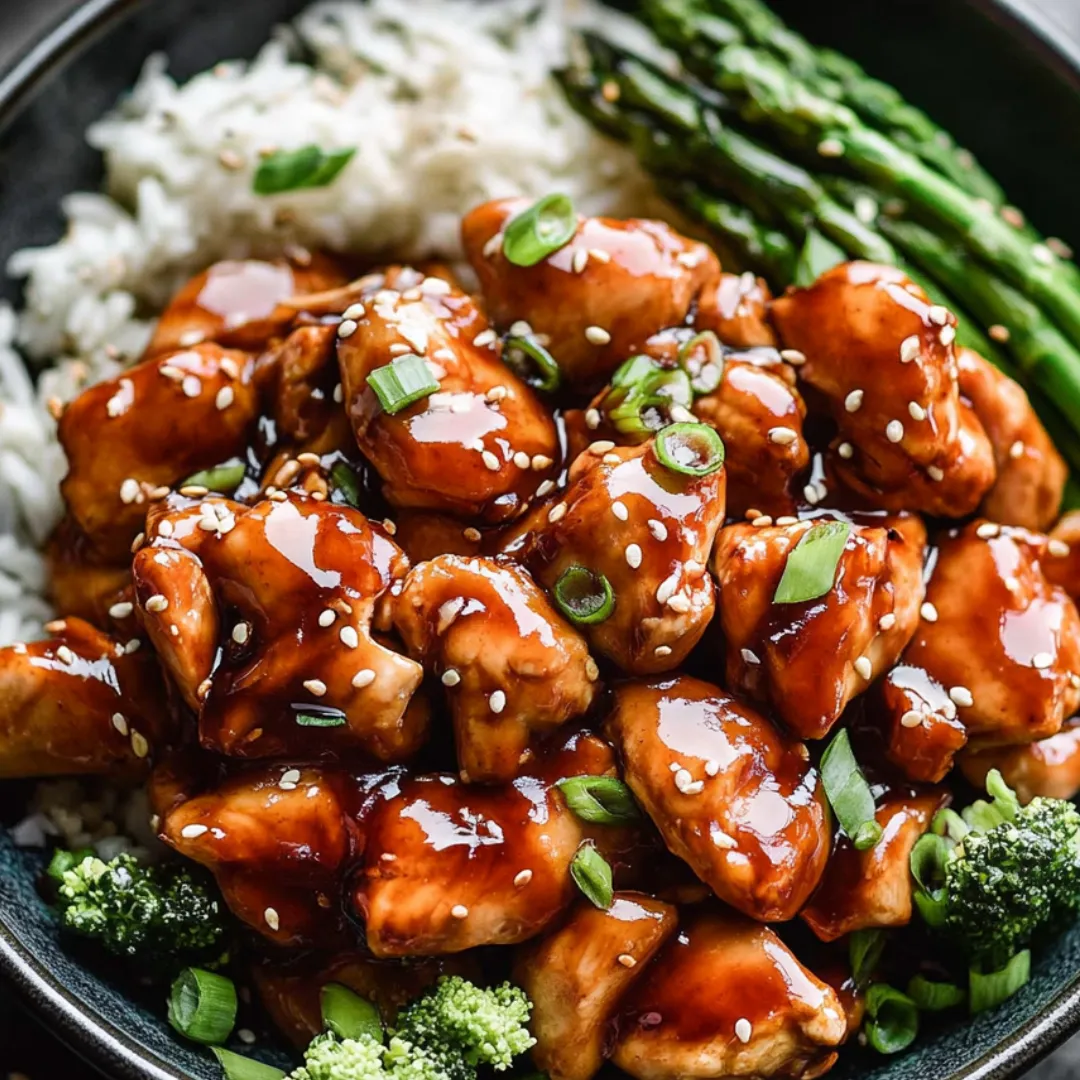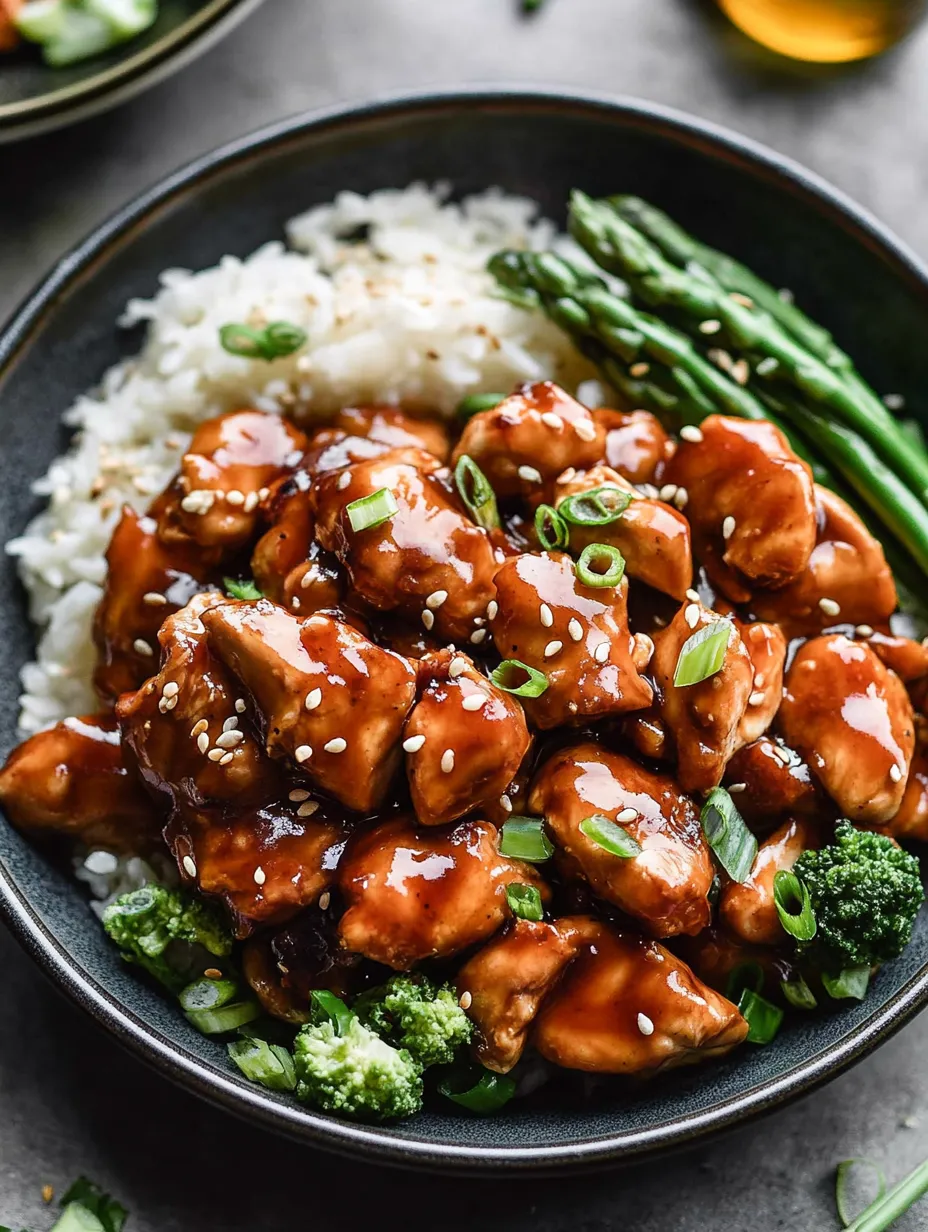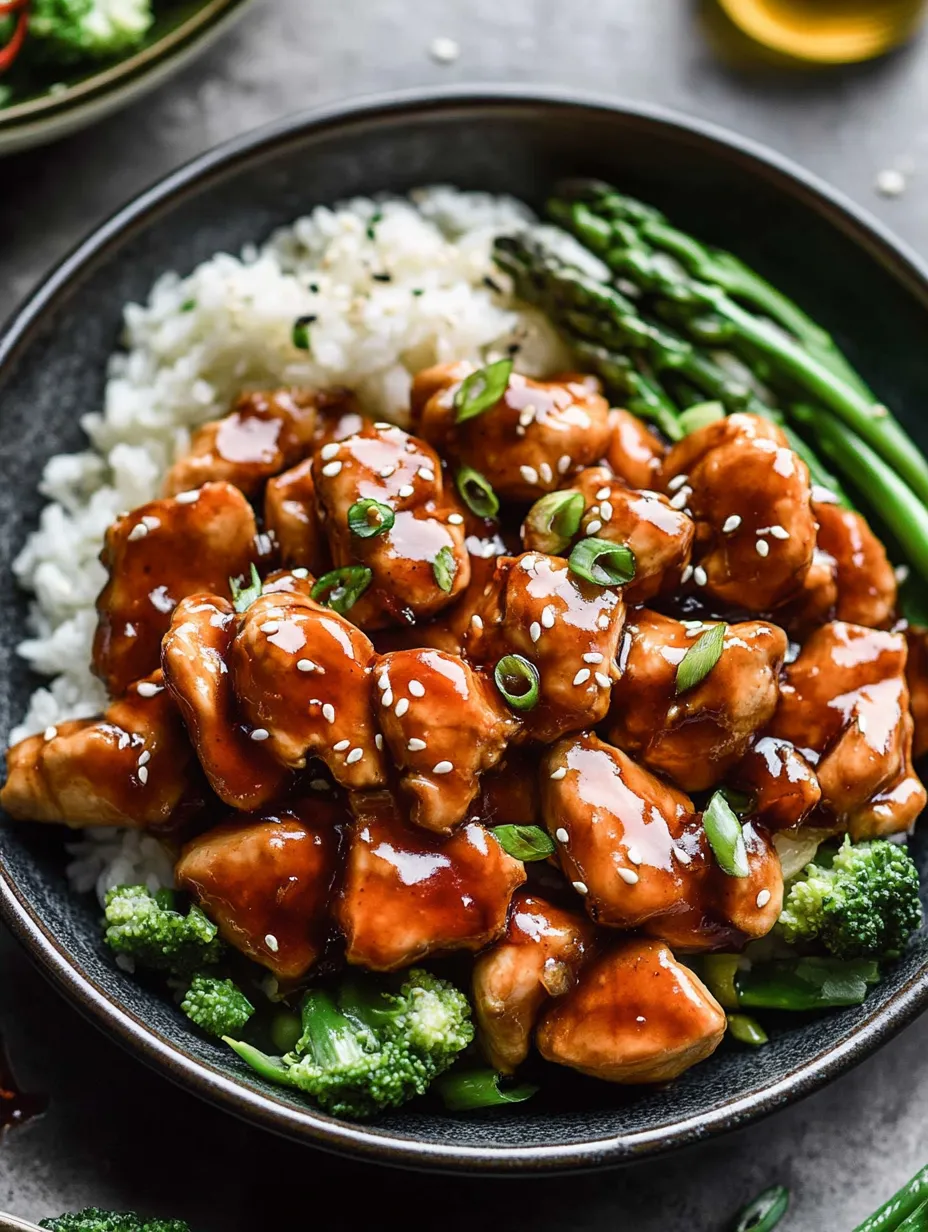 Save Pin
Save Pin
This quick 20-minute chicken teriyaki completely changed how I handle busy weeknights. The balance of sweet and tangy flavors with that shiny, sticky sauce makes every bite taste better than takeout. I can't believe something this good comes together so fast!
I stumbled on this dish during a crazy work period when I was getting home late every night. Now my kids ask for it every week, and I love throwing in different seasonal veggies to keep things interesting.
What You'll Need
- Boneless skinless chicken thighs or breasts: Go with thighs for juicier results, but breasts work great if you want something lighter
- Low sodium soy sauce: This builds the savory base and lets you adjust salt to your taste
- Cornstarch: Your ticket to that thick, glossy sauce you get at restaurants
- Honey: Brings natural sweetness and helps create that sticky coating
- Rice vinegar: Adds just enough zing to cut through the sweetness
- Fresh garlic and ginger: Don't skip the fresh stuff here - it makes all the difference in creating deep flavor
- Red pepper flakes: Brings a subtle warmth that makes everything pop
- Green onions: Adds brightness, color and a light oniony kick
- Neutral cooking oil: Pick one that can handle high heat for good browning
- Brown rice: Its earthy flavor pairs perfectly with the teriyaki
Cooking Method
- Prep the Chicken:
- Mix chicken with soy sauce, salt, pepper, and cornstarch. This quick step seasons the meat and the cornstarch locks in moisture while helping the chicken get nice and brown. Let it sit as you make your sauce.
- Mix Your Sauce:
- Stir together water, honey, rice vinegar, garlic, ginger, red pepper flakes, remaining soy sauce and cornstarch until it's all combined. This tastes way better than anything from a bottle. Make sure to break up any cornstarch clumps for a smooth result.
- Cook the Chicken:
- Get your oil hot in a big non-stick pan or wok. Spread chicken pieces out without crowding them, and don't touch them for 2-3 minutes until they're golden brown. This waiting period creates amazing flavor. Turn them over and cook another 2-3 minutes until done.
- Pour in Sauce:
- Add your sauce mixture to the cooked chicken and let it bubble away. You'll see it change right before your eyes, getting thicker and shinier in just about 1-2 minutes. Keep the chicken moving so every piece gets coated evenly.
- Serve it Up:
- Mix in most of your green onions, saving some for topping. Put it on hot rice with some steamed veggies on the side for a complete meal. The rich chicken tastes even better next to fresh vegetables.
 Save Pin
Save Pin
After years of using ginger powder, I finally tried this with fresh ginger and couldn't believe the difference. That first taste was mind-blowing. My grandma always insisted on fresh ginger in teriyaki, and now I get why. There's this zingy, aromatic quality you just can't get from the dried stuff.
Keeping Leftovers Fresh
This chicken actually tastes better the day after you make it as all the flavors meld together. Keep any extras in sealed containers in your fridge for up to 4 days. For easy lunches, pack portions with rice and veggies in separate containers you can grab on your way out.
The sauce gets pretty thick when it's cold. When you heat it back up, you might need to add a tiny bit of water to get the right consistency again. Warm it gently in the microwave or in a pan on medium-low heat so the chicken doesn't get tough.
If you want to save it longer, you can freeze portions for up to 3 months. Let it thaw in your fridge overnight before warming it up for the best results.
Ways to Switch It Up
What makes this dish so great is how easily you can change it. Try using brown sugar or maple syrup instead of honey for a different kind of sweetness. Want more complex flavors? Add a spoonful of mirin or a dash of sesame oil to your sauce.
You can toss in any veggies you like. Besides the usual stir-fry mix, try snow peas, bell peppers, baby corn, water chestnuts, or bok choy. If you're watching carbs, serve it over cauliflower rice or just pile on extra veggies instead of rice.
For some crunch and extra eye appeal, scatter some toasted sesame seeds or crushed peanuts on top when serving. If you like things spicy, a little sriracha drizzled over the top works wonders.
 Save Pin
Save Pin
Where It Comes From
Teriyaki started in Japan, where they grill or broil food with a glaze made from soy sauce, mirin, and sugar. The name combines "teri" which means shine and "yaki" meaning grilled, describing how the food looks after cooking.
What we enjoy in America today usually features a thicker sauce rather than just a light glaze. This version became popular in the US during the 1960s and has grown into one of the most loved Asian-inspired meals in American kitchens.
Common Recipe Questions
- → Can I swap thighs for chicken breasts?
Absolutely, chicken breasts work just as well as thighs in this recipe. Just watch your cooking time to keep the meat juicy.
- → What foods complement this dish?
This tastes great on a bed of rice with some steamed veggies like broccoli, snap peas, or sliced carrots on the side.
- → How can I get a thicker sauce?
Add more cornstarch to your mixture and let it bubble away longer for a thicker, stickier sauce.
- → Does this have a kick to it?
There's a gentle warmth from the red pepper flakes. You can add more or less depending on how spicy you want it.
- → What's the best way to warm up extras?
Put leftovers in a pan on medium-low or pop them in the microwave until hot. Add a tiny bit of water if the sauce looks too thick.
